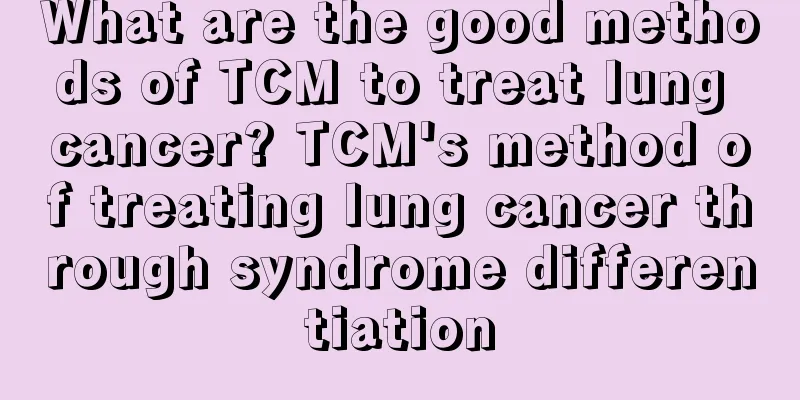Five treatment principles for shock

|
Shock is a relatively scary phenomenon. When the body is affected by many factors, it will lead to insufficient blood circulation and oxygen in the body, resulting in shock. Although shock is not a disease, when shock occurs, the patient must be rescued in time. When in shock, the body's functions will temporarily stop working. If the rescue is not timely, it will have a certain impact on the patient's health. 1. Capacity expansion. One of the characteristics of shock is insufficient circulating blood volume, so the core of treating shock is to replenish blood volume in a timely manner. During the volume expansion process, two veins need to be selected, one vein to ensure the need for volume expansion, and the other vein to ensure that the drug can be delivered into the body in a timely manner. 2. Treat the primary disease promptly. The main cause of shock is due to a certain disease in the body. Therefore, when relieving the symptoms of shock, you must first cure the disease that caused the shock, so as to ensure that the shock can be completely cured. 3. Correct the imbalance of acid-base balance. When shock occurs, many abnormal problems will occur in the body. Certain tissues in the body will produce a large amount of acidic substances. Too much acidic substances in the body will lead to poisoning. A healthy body maintains a state of acid-base balance, so it is necessary to correct the acid-base imbalance in the body in time. 4. Use vasoactive substances. Shock can be divided into many types, such as anaphylactic shock, neurological shock, etc. Different types of shock have different treatments, but vasoactive substances can treat different types of shock. Pressor drugs and vasodilators can be used during shock. 5. Eliminate the cause of shock as soon as possible. The treatment of diseases is targeted at the symptoms, so finding the primary cause of the disease is the most effective treatment method. Different treatment plans should be selected according to different causes. There are many reasons for shock, so everyone must find the cause of shock as soon as possible. Symptoms of shock 1. Early stage of shock When the primary symptoms and signs are predominant, there are signs of mild excitement, such as clear consciousness but irritability, anxiety, mental tension, pale complexion and skin, mild cyanosis of the lips and nail beds, accelerated heart rate, increased respiratory rate, cold sweat, weak and rapid pulse, blood pressure may drop suddenly, or drop slightly, or even be normal or slightly high, weak pulse pressure, and decreased urine volume. 2. Mid-stage shock The patient is irritable, unconscious, has shallow breathing, decreased limb temperature, low and dull heart sounds, a thin and weak pulse, and a progressive decrease in blood pressure that may be below 50 mmHg or unmeasurable. The pulse pressure is less than 20 mmHg. The skin is cold and clammy, and the urine is scanty or anemic. 3. Late stage of shock Manifestations include DIC and multiple organ failure. (1) DIC manifestations Refractory hypotension, skin cyanosis or extensive bleeding, nail bed microcirculatory congestion, and poor efficacy of vasoactive drugs often coexist with organ failure. (2) Symptoms of acute respiratory failure Symptoms include progressive dyspnea that is difficult to correct with oxygen inhalation, progressive hypoxemia, tachypnea, cyanosis, pulmonary edema and decreased lung compliance. (3) Symptoms of acute heart failure Rapid breathing, cyanosis, increased heart rate, dull heart sounds, and may have gallop rhythm and arrhythmia. If a patient experiences a slow heart rate, a sallow complexion, and cold extremities, these are also signs of heart failure. The central venous pressure and pulmonary artery wedge pressure will increase, and in severe cases, pulmonary edema may occur. (4) Symptoms of acute renal failure Oliguria or anuria, azotemia, hyperkalemia and other water, electrolyte and acid-base balance disorders. (5) Other manifestations The degree of consciousness disturbance reflects the blood supply to the brain. Liver failure may cause jaundice and increased blood bilirubin. However, since the liver has a strong compensatory function, the incidence of hepatic encephalopathy is not high. Gastrointestinal dysfunction is often manifested by abdominal pain, indigestion, hematemesis and black stools. |
<<: What to do if the shoe velcro doesn't stick anymore
>>: Can washing your face with white sugar remove freckles?
Recommend
How to adjust diet after lung cancer surgery? Diet adjustment plan for lung cancer patients after surgery
For lung cancer patients, many patients choose su...
Spanking to treat mental illness
I believe that everyone was naughty when they wer...
Hepatitis B recovery period jaundice
For many hepatitis B patients, the most direct sy...
What role does sleep play in the human body?
Some people, relying on their youth, often do eve...
What is the control range of TG in hemisection of thyroid cancer
The range of TSH (thyroid-stimulating hormone) co...
How to remove odors indoors, 6 tips to save quickly
There are some problems in home life, such as unp...
Is endometrial cancer contagious to humans?
There are many friends around us who suffer from ...
What should I do if my face becomes red and hot due to allergies
Skin allergies are very red and hot, which can ha...
What are the methods of making blueberry wine
Blueberry is a common fruit. It not only tastes g...
What vitamins are good for hair
A head of black hair can greatly enhance your app...
Briefly describe the basic causes of tongue cancer
Having cancer is not scary. Cancer cells are inna...
Can I drink lemon water while losing weight?
Nowadays, weight loss is a hot topic. Diet and we...
Patients need to know some ways to treat prostate cancer
In recent years, the incidence of prostate cancer...
What are the causes of liver cancer
What are the causes of liver cancer? The main cau...
What tests should be done for liver cancer
What tests should be done for liver cancer? The t...









